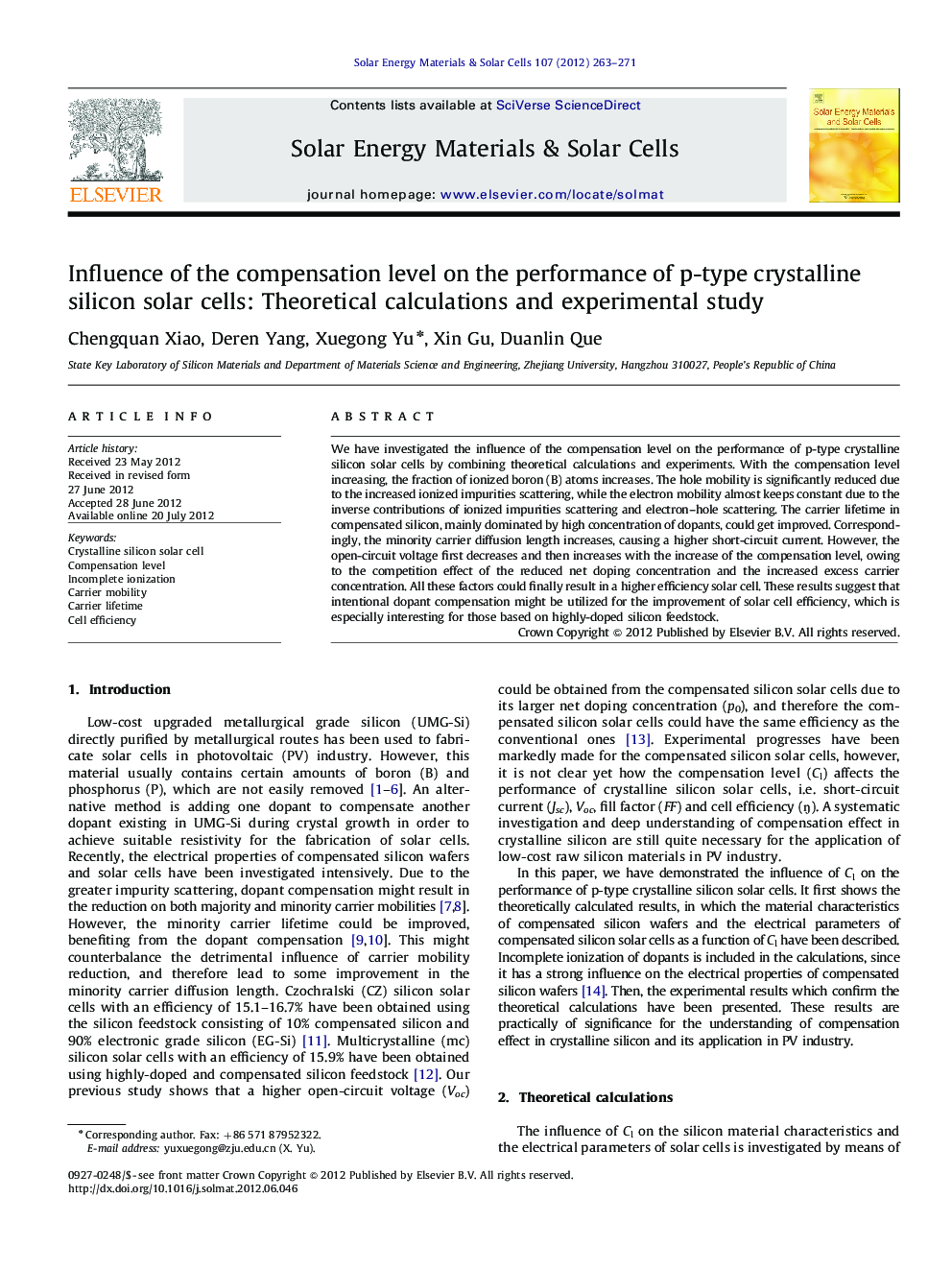| Article ID | Journal | Published Year | Pages | File Type |
|---|---|---|---|---|
| 78918 | Solar Energy Materials and Solar Cells | 2012 | 9 Pages |
We have investigated the influence of the compensation level on the performance of p-type crystalline silicon solar cells by combining theoretical calculations and experiments. With the compensation level increasing, the fraction of ionized boron (B) atoms increases. The hole mobility is significantly reduced due to the increased ionized impurities scattering, while the electron mobility almost keeps constant due to the inverse contributions of ionized impurities scattering and electron–hole scattering. The carrier lifetime in compensated silicon, mainly dominated by high concentration of dopants, could get improved. Correspondingly, the minority carrier diffusion length increases, causing a higher short-circuit current. However, the open-circuit voltage first decreases and then increases with the increase of the compensation level, owing to the competition effect of the reduced net doping concentration and the increased excess carrier concentration. All these factors could finally result in a higher efficiency solar cell. These results suggest that intentional dopant compensation might be utilized for the improvement of solar cell efficiency, which is especially interesting for those based on highly-doped silicon feedstock.
► The hole mobility is significantly reduced. ► The electron mobility almost keeps constant. ► The carrier lifetime is mainly dominated by high concentration of dopants. ► With the compensation level increasing, the carrier lifetime could get improved. ► The conversion efficiency of the final solar cells could get improved.
